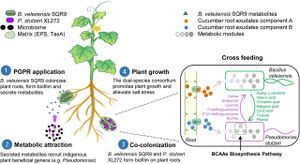A new study highlights the integral role of certain biomarkers in predicting cardiovascular risk among individuals with prediabetes and type 2 diabetes mellitus (T2DM). With diabetes becoming increasingly prevalent worldwide, the exploration of connections between metabolic disturbances and cardiovascular health is more relevant than ever.
Researchers from Istanbul University-Cerrahpasa set out to investigate the interplay between oxidized low-density lipoprotein (oxLDL), soluble lectin-like oxidized LDL (sLOX-1), proprotein convertase subtilisin/kexin type 9 (PCSK9), and carotid intima-media thickness (CIMT). Their findings may pave the way for new risk assessment strategies for cardiovascular diseases, which remain one of the leading causes of morbidity and mortality among diabetic patients.
Diabetes and prediabetes are known to accelerate the development of cardiovascular diseases, primarily through mechanisms such as lipid dysregulation and the subsequent formation of arterial plaques. Traditionally, addressing hyperglycemia through careful blood sugar management has been the focal point for clinicians; still, the role of lipid profiles, particularly LDL, has gained significant attention.
The study enrolled 200 participants, consisting of 50 T2DM patients with macrovascular complications, 50 with uncomplicated T2DM, 50 with prediabetes, and 50 healthy controls. Among the evaluated biomarkers, circulating levels of oxLDL were significantly elevated, particularly among T2DM subjects with macrovascular complications compared to controls.
Notably, the levels of PCSK9, which is known to promote LDL receptor degradation, were also found to be higher in patients with macrovascular issues. The research demonstrated significant positive correlations between PCSK9 levels and both oxLDL and CIMT, shedding light on the relationship between lipid metabolism and vascular health within diabetic populations.
The research team employed enzyme-linked immunosorbent assays (ELISAs) to measure serum levels of oxLDL, sLOX-1, and PCSK9, alongside high-resolution B-mode ultrasonography to assess CIMT. The results illustrated progressive increases in CIMT from healthy controls to patients with macrovascular complications, indicating early subclinical atherosclerosis—a condition where arterial wall thickening occurs without overt symptoms.
"Both right and left CIMT also showed significant differences between the groups of prediabetes versus uncomplicated diabetes," the authors noted. This increase signals the need for proactive cardiovascular assessments, as heightened CIMT can indicate greater susceptibility to cardiovascular events.
The study's findings affirm the importance of assessing levels of oxLDL, sLOX-1, and PCSK9 as potential markers for cardiovascular health. The authors concluded, "Our findings suggest these biomarkers may be used as potential markers for the assessment of cardiovascular risk.” The results signal the clinical utility of these biomarkers, particularly PCSK9, as they show significant predictive capabilities for complicational developments.
This research emphasizes not just the importance of glycemic control but also the necessity for comprehensive lipid management strategies, including monitoring levels of oxLDL and PCSK9, to mitigate cardiovascular risks among diabetic individuals. When combined with CIMT measurements, health care professionals could develop more accurate risk stratification protocols, thereby improving outcomes for diabetic patients with increased cardiovascular risk.
The authors suggest future longitudinal studies be undertaken to confirm findings and explore potential therapeutic interventions targeting these biomarkers to provide clearer guidance for managing cardiovascular risks among those with diabetes.



